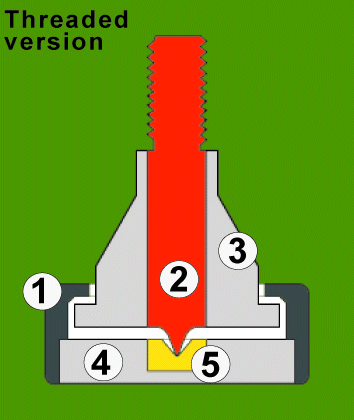I would have thought that the ideal is for (1) the cabinet to not vibrate at all, and (2) for no energy to be transferred to the structure of the room (except via the air).
Presumably you can achieve (2) with aircraft electronics suspension mounts or whatever, but this may actually increase (1). With a stiff mount to the floor, you get closer to (1) but with an increase in (2) - if the floor is not concrete.
Intuitively, a really heavy enclosure throughout its structure (and not just lead weights in the base) improves (1) and (2) in all circumstances.
And if the enclosure itself is also heavily damped, would this not help also? The sand-filled enclosure wall sounds like a good idea.
Presumably you can achieve (2) with aircraft electronics suspension mounts or whatever, but this may actually increase (1). With a stiff mount to the floor, you get closer to (1) but with an increase in (2) - if the floor is not concrete.
Intuitively, a really heavy enclosure throughout its structure (and not just lead weights in the base) improves (1) and (2) in all circumstances.
And if the enclosure itself is also heavily damped, would this not help also? The sand-filled enclosure wall sounds like a good idea.

